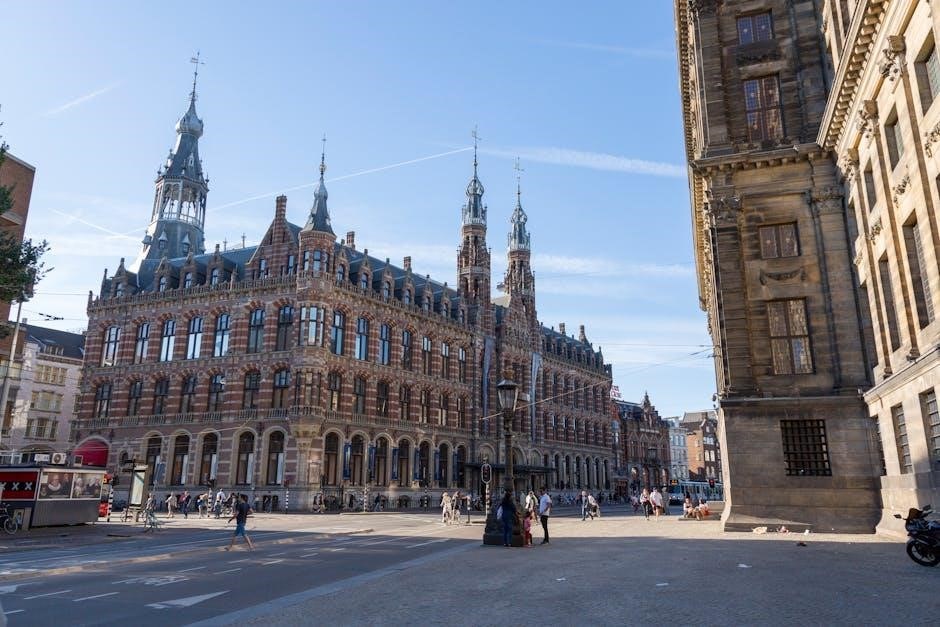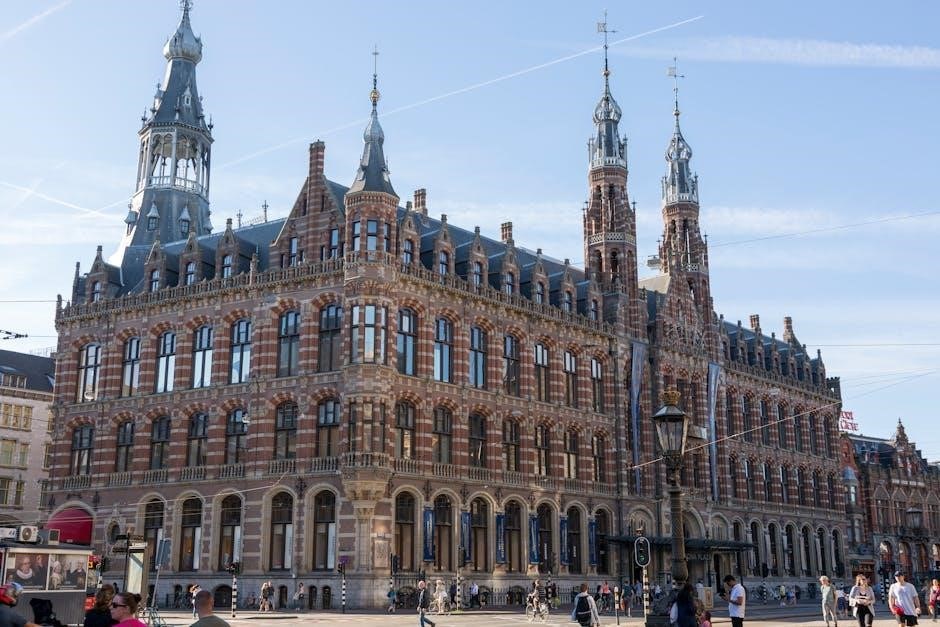The Magna Carta‚ a cornerstone of liberty‚ is a historic document with 63 clauses‚ shaping human rights and justice․ Its enduring influence marks it as a foundational legal text․

1․1 Brief History
The Magna Carta‚ sealed in 1215 by King John‚ is a foundational document in human rights and governance․ It emerged from a conflict between the king and rebellious barons seeking to limit his power․ The document‚ originally known as the “Articles of the Barons‚” was reissued in 1216 by Henry III and again in 1217 and 1225․ It contained 63 clauses addressing feudal rights‚ justice‚ and the Church’s role‚ laying the groundwork for constitutional law․ Over time‚ the Magna Carta evolved‚ with only three clauses remaining in modern law․ Its enduring legacy lies in establishing the principle that even monarchs are subject to the rule of law‚ influencing democratic systems worldwide․ The document’s survival and historical significance have made it a symbol of liberty‚ celebrated in its 800th anniversary in 2015․

1;2 Historical Significance
The Magna Carta holds unparalleled historical significance as a foundational document of liberty and governance․ Sealed in 1215‚ it established the principle that the king was not above the law‚ a revolutionary concept at the time․ The document’s 63 clauses addressed feudal rights‚ justice‚ and the role of the Church‚ laying the groundwork for constitutional law․ Its influence extends to modern democracies‚ shaping the U․S․ Constitution and Bill of Rights․ The Magna Carta symbolizes the struggle for human rights and the limitation of absolute power‚ marking a pivotal moment in the evolution of democracy․ Celebrated globally‚ it remains a powerful symbol of freedom and justice‚ inspiring legal reforms and political movements worldwide․ Its enduring legacy is evident in its 800th anniversary celebration‚ where the four surviving copies were reunited‚ underscoring its timeless importance in shaping modern governance and human rights․

Historical Background
The Magna Carta emerged in 1215 amid a conflict between King John and rebellious barons‚ establishing the rule of law and limiting the monarch’s authority‚ shaping medieval governance․
2․1 Creation in 1215
In 1215‚ the Magna Carta was created to address the growing tensions between King John and his barons․ This document‚ sealed at Runnymede‚ aimed to establish a framework for governance‚ ensuring that the king was not above the law․ It introduced key principles such as the protection of the church‚ the rights of barons‚ and the establishment of a council to oversee the monarch’s actions․ The creation of the Magna Carta marked a significant shift in the balance of power‚ limiting the absolute authority of the king and laying the foundation for constitutional monarchy․ Its 63 clauses covered a wide range of issues‚ from feudal rights to the administration of justice‚ reflecting the desire for a more equitable and just society․ This document not only resolved the immediate conflict but also set a precedent for future legal and political reforms․
2․2 Conflict Between King John and Barons
The conflict between King John and the English barons in the early 13th century was rooted in the king’s abuse of power and disregard for feudal customs․ King John had imposed heavy taxes‚ seized lands without justification‚ and ignored traditional rights‚ leading to widespread discontent among the barons․ They sought to limit his authority and protect their liberties․ Tensions escalated in 1215 when the barons‚ led by Stephen Langton and Henry de Bohun‚ demanded that the king agree to a document establishing limits on his power․ This document‚ later known as the Magna Carta‚ was intended to restore feudal rights and ensure justice․ The barons’ actions were a direct response to King John’s arbitrary rule‚ marking a turning point in the struggle for constitutional governance․ Their resolve to challenge the monarch demonstrated the growing strength of the baronial class and their commitment to the rule of law․

The Document’s Content
The Magna Carta contains 63 clauses‚ primarily focusing on feudal rights‚ the protection of the church‚ and limits on the king’s power․ It established key principles of liberty and justice․
3․1 Structure and Clauses
The Magna Carta is structured as a single document divided into 63 clauses‚ each addressing specific grievances or establishing new rights․ The clauses are grouped into broader themes‚ such as feudal rights‚ the protection of the church‚ and the limitation of the king’s authority․ Many clauses focus on practical reforms‚ such as regulating taxes‚ controlling the misuse of forest laws‚ and ensuring fair justice․ Some clauses‚ like the famous Clause 39 and 40‚ emphasize the principle of due process and the protection of individual liberties․ The document also includes provisions for the enforcement of its terms‚ such as the creation of a council of 25 barons to oversee the king’s compliance․ The clauses vary in detail‚ from specific financial penalties to broader statements of principle‚ reflecting the diverse concerns of the barons who drafted it․ The document ends with a final clause confirming its validity and the king’s pledge to abide by its terms․
3․2 Key Provisions
The Magna Carta contains several key provisions that established fundamental principles of law and governance․ One of the most famous clauses‚ Clause 39‚ states that no free man shall be seized or imprisoned without lawful judgment‚ emphasizing due process and protection against arbitrary detention․ Clause 40 ensures justice will not be sold‚ denied‚ or delayed‚ safeguarding access to fair legal proceedings․ Another significant provision limits the king’s ability to raise taxes without consent‚ challenging the monarchy’s absolute power․ The document also protects the rights of the church‚ ensures the inheritance of property‚ and regulates the misuse of forest laws․ Additionally‚ it introduces the concept of a council of 25 barons to oversee the king’s compliance‚ creating a system of accountability․ These provisions collectively laid the groundwork for constitutional law‚ limiting the authority of rulers and protecting individual rights‚ influencing legal systems for centuries to come․

The Misidentified Copy

A copy of the Magna Carta was mistakenly labeled as a 17th-century forgery‚ overshadowing its true historical significance until its accurate identification revealed its genuine medieval origins and value․
4․1 Discovery at Harvard Law School Library
In the 1930s‚ a previously overlooked copy of the Magna Carta was discovered in the archives of the Harvard Law School Library․ This copy was initially misidentified as a 17th-century forgery‚ and its true origins were not recognized for decades․ The document had been acquired by the library in 1931 as part of a larger collection of historical manuscripts․ Its historical significance remained unrecognized until modern scholars conducted a thorough examination in the 21st century․ Advanced techniques‚ including radiocarbon dating and textual analysis‚ confirmed the document’s authenticity as a genuine 1215 Magna Carta․ This discovery not only shed light on the document’s history but also highlighted the importance of meticulous research in uncovering hidden treasures within archival collections․ The Harvard copy is now celebrated as one of the most well-preserved versions of the Magna Carta‚ offering valuable insights into its creation and historical context․
4․2 Authentication Process
The authentication of the Magna Carta discovered at Harvard Law School Library involved a rigorous process to verify its legitimacy․ Scholars utilized radiocarbon dating to analyze the parchment’s age‚ confirming it dated back to the 13th century․ Ink analysis was conducted to ensure the materials were consistent with those used in 1215․ Paleographers examined the handwriting to match it with known scripts from the medieval period․ Historical researchers traced the document’s provenance‚ linking it to the original 1215 copies․ Experts compared the text with other authenticated versions‚ ensuring its clauses aligned with the known content of the Magna Carta․ This multi-faceted approach confirmed the document’s authenticity‚ solidifying its place as a genuine artifact of immense historical significance․ The process underscored the importance of interdisciplinary collaboration in verifying rare and valuable historical documents․

800th Anniversary Celebration
The 800th anniversary of the Magna Carta in 2015 was celebrated globally with events and exhibitions․ It highlighted the document’s enduring influence and reunited the four original copies for the first time․
5․1 Event Details
The 800th anniversary celebration of the Magna Carta in 2015 was a grand affair‚ marking a significant milestone in legal and political history․ The main event was held at Lincoln Cathedral‚ where one of the original 1215 copies is housed․ A special concert featuring classical music and readings from the document took place‚ attended by dignitaries and historians․ Additionally‚ a digital exhibition showcasing the Magna Carta’s history and influence was launched‚ accessible to a global audience․ Commemorative activities included reenactments of King John’s sealing of the document‚ educational programs for schools‚ and workshops on its modern relevance․ The celebration also highlighted the document’s role in shaping democracy‚ with scholars and policymakers discussing its legacy․ These events not only honored the past but also emphasized the Magna Carta’s enduring impact on global governance and human rights․
Overall‚ the anniversary was a blend of cultural‚ educational‚ and reflective activities‚ ensuring the Magna Carta’s principles remain relevant for future generations․
5․2 Reunion of the Four Copies
The 800th anniversary of the Magna Carta witnessed a historic reunion of the four surviving original copies from 1215․ These rare documents‚ typically housed in separate locations such as Salisbury Cathedral‚ Lincoln Cathedral‚ Hereford Cathedral‚ and the British Library‚ were brought together for a special exhibition․ This unique event allowed scholars and the public to view all four copies side by side‚ highlighting their shared and distinct characteristics․ Conservation experts took great care to ensure the documents’ safety during transportation and display․ The reunion was part of a broader effort to educate the public about the Magna Carta’s enduring influence on democracy and law․ It also featured digital displays and interactive exhibits‚ making the event accessible to a global audience․ This once-in-a-lifetime opportunity underscored the document’s historical significance and its relevance in modern times․
The reunion not only celebrated the past but also inspired future generations to appreciate the foundations of liberty and justice․

Translation and Interpretation
The Magna Carta‚ originally written in Latin‚ has been translated into English to broaden its accessibility․ Its interpretation has evolved over centuries‚ influencing modern legal frameworks and democratic principles globally․
6․1 English Translation
The Magna Carta‚ originally written in Latin‚ was first translated into English in the 16th century to make its principles more accessible․ This translation played a crucial role in spreading its influence during the English Civil War and beyond․ The document’s clauses‚ such as the famous “No free man shall be seized or imprisoned․․․ unless by the lawful judgment of his equals or by the law of the land‚” were pivotal in shaping modern notions of liberty and due process․ The English translation emphasized protections for individual rights and limits on governmental power‚ resonating deeply with emerging democratic ideals․ It remains a cornerstone of legal and political thought‚ inspiring reforms and constitutions worldwide․ The translation ensured the Magna Carta’s enduring relevance‚ bridging centuries and languages to uphold justice and freedom․
6․2 Modern Understanding
The Magna Carta’s modern understanding highlights its enduring legacy as a cornerstone of democracy and human rights․ While written in 1215‚ its principles—such as due process‚ protection of individual rights‚ and limits on governmental power—remain central to modern legal systems․ The document is celebrated for establishing the concept of the rule of law‚ ensuring that even rulers are not above legal accountability․ Its influence is evident in the U․S․ Constitution‚ the Universal Declaration of Human Rights‚ and other foundational documents․ Today‚ the Magna Carta is seen as a symbol of freedom and justice‚ inspiring contemporary movements for democracy and equality․ Despite some archaic clauses no longer being relevant‚ its core ideas continue to shape political and legal reforms globally‚ proving its timeless relevance in fostering fair governance and protecting individual liberties․

Influence and Legacy
The Magna Carta is a cornerstone of modern governance‚ shaping democratic principles and inspiring landmark documents like the U․S․ Constitution․ Its enduring influence underscores its relevance in promoting justice and equality today․
7․1 Impact on Modern Democracy
The Magna Carta is widely regarded as a foundational document of modern democracy‚ influencing constitutional governance globally․ Its principles of the rule of law‚ due process‚ and limitations on governmental power have shaped political systems worldwide․ The document’s emphasis on protecting individual rights and ensuring accountability from rulers inspired the development of democratic institutions․ For instance‚ the U․S․ Constitution and Bill of Rights reflect its ideas‚ such as trial by jury and protection from unlawful imprisonment․ Additionally‚ the Magna Carta’s legacy can be seen in the Universal Declaration of Human Rights and numerous national constitutions․ Its symbolic power endures‚ representing the struggle against tyranny and the pursuit of justice․ Today‚ it remains a cornerstone of democratic values‚ reminding societies of the importance of checks on authority and the protection of individual freedoms․
7․2 Legal and Political Reforms
The Magna Carta has profoundly influenced legal and political reforms‚ establishing key principles that underpin modern governance․ It introduced the concept of the rule of law‚ asserting that even monarchs were not above legal accountability․ This idea reshaped political systems‚ leading to the development of constitutional monarchies and parliamentary democracies․ The document’s emphasis on due process and the protection of individual rights inspired reforms in common law‚ particularly in areas like trial by jury and the prohibition of unlawful detention․ Its clauses limiting arbitrary power and ensuring justice for all classes laid the groundwork for modern legal systems․ Over time‚ the Magna Carta’s principles have been incorporated into numerous national constitutions and legal frameworks‚ solidifying its role as a catalyst for legal and political transformation․ Its legacy continues to inspire reforms aimed at upholding justice‚ fairness‚ and the limitation of governmental authority․
The Magna Carta stands as a cornerstone of liberty and justice‚ shaping the evolution of constitutional governance and human rights․ Signed in 1215‚ this foundational document curtailed absolute monarchy‚ establishing principles like the rule of law and protection of individual rights․ Its influence transcends time‚ inspiring political and legal reforms globally‚ from the English Civil War to the U․S․ Constitution; Despite its origins in medieval conflict‚ the Magna Carta’s ideals remain relevant‚ underpinning modern democracy․ Celebrations like the 800th anniversary highlight its enduring legacy‚ reminding us of its pivotal role in the struggle for freedom and fairness․ Today‚ the Magna Carta is not just a historical relic but a living symbol of the quest for justice and equality‚ continuing to inspire efforts to limit governmental power and protect individual liberties․
